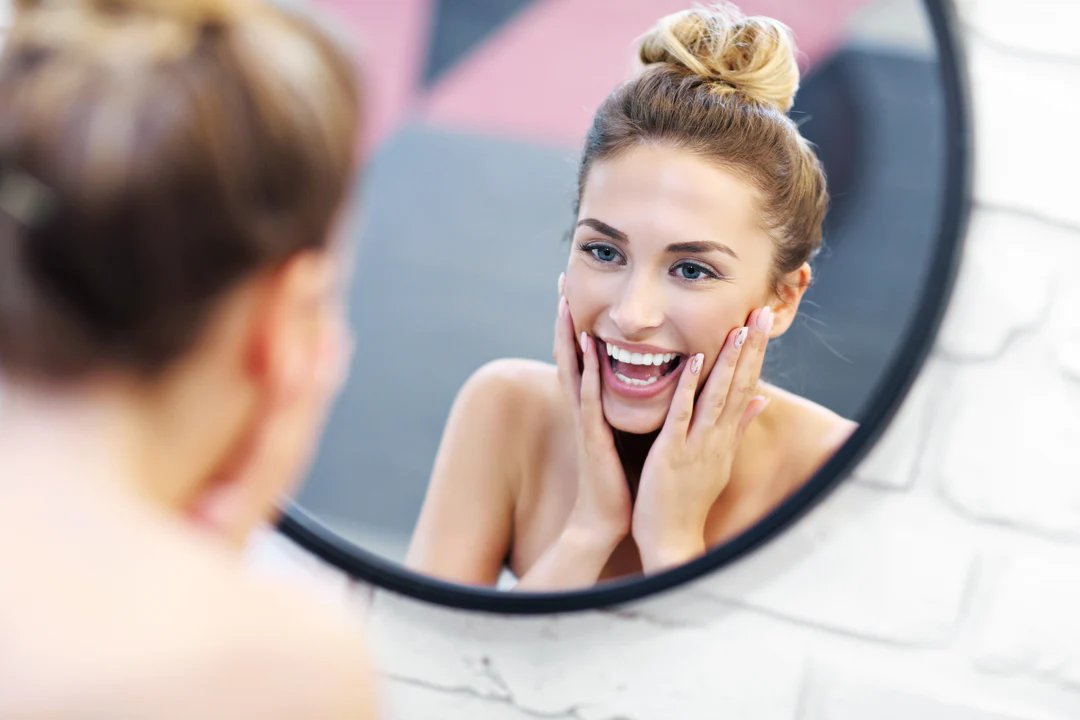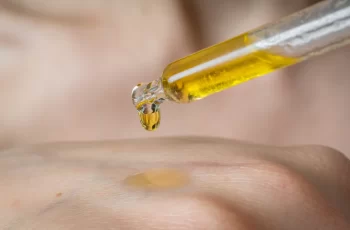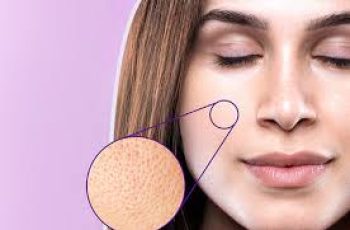
Can You use Peptides and Retinol Together?
Yes some skincare ingredients go together as well as strawberries and cream, some on the other hand are an acquired taste and need a little more thought behind their application. Now the question is, can you use peptides and retinol together? Is this the skincare duo your routine has been missing out on? Or will it all end in irritation? Let’s find out more together!
What is Retinol?
Retinol is a form of vitamin A and has gained a reputation as a highly effective skincare ingredient that delivers plenty of skincare benefits. It can increase the speed at which your skin cells turn over meaning it is able to keep your complexion looking brighter and younger. You’ll also find it is able to combat any breakouts, be it frequent acne or occasional blemishes. Not to mention the increase of cell turnover can also result in a marked improvement on any signs of hyperpigmentation and dark spots giving you an all-over even skin tone.
What are Peptides?
Peptides are amino acids that make up short chains in the lower layers of the skin. These ingredients are known for their bilingual ability and are cell communicating. This basically means they can tell the skin cells to boost the production of collagen. By doing this you will find that the skin barrier becomes stronger ensuring it is able to protect itself from free radical damage. The skin will also appear noticeably plumped, smoother and full of youthful bounce.
Can you mix retinol and peptides?
Yes, you can! In fact, you’ll find that teaming these ingredients together will result in an all over improvement. To get the best out of both powerhouses it is best to apply them both during your evening routine. This is because of the fact retinol is a photosensitive ingredient and when exposed to UV rays can be rendered useless. You’ll also find that peptides contain antioxidant properties making them effective at keeping the skin barrier strong and able to combat signs of free radicals, such as pollution, UVA and UVB rays as well as other environmental aggressors.
There is nothing stopping you from using these skin heroes together, but if you feel as though you’d prefer to apply each separately, start with peptides in your morning routine followed with retinol in the evening.
What goes on first peptides or retinol?
When using these powerhouse ingredients, it is best to start with retinol first. This will allow the potent active levels of retinol to get to work increasing the speed of cell turnover and revealing brighter, healthy skin. With this also comes the risk of irritation, dryness and redness which can be easily calmed once you have applied a nourishing moisturiser that’s enriched in peptides.
Although for many skin types the introduction of peptides and retinol together will be highly beneficial. If you are prone to dryness and sensitivity however it is best to start introducing both ingredients slowly into your routine. Much like all skincare ingredients I would also suggest consulting with a doctor or dermatologist for the peace of mind that you are using the best options for your skin’s needs.
What cannot be used with peptides?
There are very few skincare ingredients that cannot be used with peptides. For the most effective routine once you have introduced peptides is to opt for formulas, such as serums and moisturisers as this allows the peptides to remain on the face for prolonged amount of time. You can also alternate which other ingredients you decide to team together, be it vitamin C, niacinamide, hyaluronic acid, retinol, AHAs and many more.
The way peptides work on the skin by penetrating the outer layer of the skin and reaching into the deeper areas of the skin very easily. This results in them being a handy ingredient to include in your routine and combining them with other highly effective product formulations.
Are peptides or retinol better?
With each of these ingredients providing unique skin benefits whilst working on different areas of the skin there is nothing stopping you from using both these together. Indeed, they are a perfect match and work together at improving the overall look and feel of the skin. As I have already mentioned, if your skin type is not overly sensitive or prone to becoming severely dry, then you will reap the rewards of this potent skin duo.
If you are wanting to know more about peptides and retinol whilst trying to figure out which is better for you to introduce into your routine, check out our dedicated blog post.
When should I use peptides?
The best way of using peptides in your routine is applying a serum onto freshly cleansed skin before any moisturisation. By opting for a serum that contains active levels of peptides you will ensure the skin reaps the rewards without any side effectives of potential dryness and irritation. When following this with a moisturiser remember to be mindful of any potential active levels of aggravating ingredients and increase in skin irritation.
What is peptide good for?
There are a few reasons why peptides are good for the skin, here are some of the main benefits you can expect to see when using peptides in your daily routine.
Improved Skin Barrier
The protective skin barrier plays a vital role in maintaining the health of the skin. Whilst it contains the correct levels of water and oil it can protect itself from harmful exposure to free radicals. These occur from everyday aggressors, such as pollution, cigarette smoke, ultraviolet rays, bacteria, and other impurities. All of which weaken the skin barrier leading to signs of ageing, such as fine lines and wrinkles, loss of elasticity and dark spots with uneven skin tone.
Reduces Signs of Ageing Thanks to peptides cell communicating abilities they can tell skin cells to boost the production of collagen in the lower layers of the skin. With the collagen and elastin the skin receiving a helping hand from peptides building blocks of protein, the complexion is left looking firmer, younger and smoother. Antioxidant Benefits Peptides are loaded with antioxidants all of which help ease inflammation, even out the skin tone, repair damaged skin whilst protecting it from any further damage. There you have it, some answers to a few questions we have seen lately of whether you can use peptides and retinol together. If you have any further questions, come and follow us on Instagram.
DQH Knowledge drop: In your 20s, your skin cell turnover decreases. (Cell turnover is a key component in keeping your skin youthful.) You know what else slows down? Your collagen production. Starting in your 20s, collagen decreases by about 1 percent per year. Should you want to prevent fine lines and wrinkles, start by eliminating behaviors that contribute to premature aging. “If it’s bad for you, it’s bad for your skin,” says dermatologist Michel Somenek.
“Cigarette smoking reduces blood flow to the skin and causes premature wrinkling and a dull skin texture. Making the repeated pursed motion to inhale can also cause smoker’s lines. Alcohol and recreational drugs are toxins for the skin that damage its cellular structure and DNA,” Somenek tells us. “The faster you eliminate vices while you are young, the better chance your skin and body have to recuperate.” Also, adopting an anti-aging routine in your 20s is key. After all, the best offense is a good defense. We spoke to Somenek and experts Joshua Ross and Audrey Kunin to find out more.
Keep reading for the best anti-aging products for your 20s, according to skincare professionals.
Sunscreen
“We all know that the sun is the number one cause of skin aging and starting the prevention in your 20s is very important,” Ross says. “The majority of your sun damage won’t start to appear until you’re in your 30s, so don’t wait until you see it surface or you’ll be behind the curve. Stay ahead of it with a good-quality zinc-based sunscreen worn daily.”
Farmacy Green Defense Daily Mineral Sunscreen
An invisible sunscreen with SPF 30, plus botanical extracts meant to protect skin with tons of antioxidants. Bonus: It’s clean and fine to use under makeup.
Bareminerals Complexion Rescue™ Tinted Moisturizer Broad Spectrum SPF 30
Although we recommend you use your SPF and moisturizer separately, we also understand moments when you don’t have time or energy for that extra step. For those times, this bareMinerals moisturizer is a great thing to have on hand.
Vitamin C Serum
“A great introduction to anti-aging is to start with a vitamin C serum in your morning skincare routine,” Ross says. “It’s a powerful antioxidant that will neutralize free radicals and brighten the skin.” He adds that it’s a great way to counteract the effects of the sun’s harmful rays, which, as previously mentioned, are among the biggest causes of premature aging.
Drunk Elephant C-Firma™ Vitamin C Day Serum
The Drunk Elephant C-Firma is a lightweight serum that promises to give skin a glow by combining the brightening powers of vitamin C with ferulic acid, l-ascorbic acid, and vitamin E. The included sodium hyaluronate is meant to replace hydration loss, so you shouldn’t have to deal with any irritation.
Sunday Riley C.E.O. Rapid Flash Brightening Serum
This potent serum is jam-packed with vitamin C (15 percent, to be exact), which means it’s a potential superstar at both brightening skin and dousing it in antioxidants.
Peptides
Using peptides on your skin has many benefits, says Somenek. “The skin barrier is what defends the body against pollution, UV rays, bacteria, and toxins. It can be damaged by several everyday factors. Using topical peptides aids in building a stronger barrier,” he says. “Peptides comprise elastic fibers, which are a type of protein. These fibers help to make skin appear taut and firm. Peptides can also help repair damaged skin, relieve inflammation, and even out skin tone. Some peptides can kill acne-causing bacteria that is common in 20-somethings.”
Kunin agrees, saying, “Peptides are an excellent entry point for supporting collagen.” She recommends looking for face and eye treatments that contain these collagen-boosting powerhouses.
Charlotte Tilbury Magic Eye Rescue Cream
This Charlotte Tilbury super-emollient eye cream has a base of coconut oil and shea butter (read: it’s incredibly hydrating). Botanicals plus peptides are meant to help reduce dark circles and boost collagen, respectively.
This creamy moisturizer serves up potent collagen-boosting peptides and pycnogenol, and antioxidant-rich vitamin C. “Instead of sitting on top of the skin, peptides penetrate the outer layer so they go deep. The ‘signals’ they send tell the cells to produce elastin and collagen, which are needed for youthful-looking skin,” explains Somenek.
At-Home Peel Pads
Remember that skin cell turnover fiasco we talked about earlier? One way to help support it is by exfoliating. “Exfoliation is important to help keep skin fresh and luminous,” Kunin says. She recommends using at-home peel pads as an easy and effective way to exfoliate.
“The goal in your 20s is to fight the slowing pace of cell turnover. It is wise to use products that gently exfoliate, yet still remove oil and other impurities. Products that have Alpha Hydroxy Acids (AHA) or Beta Hydroxy Acids (BHA) are a good choice.”
According to Somenek, you should only exfoliate two to three times a week. “People of all ages are guilty of over-exfoliating and that can be too much of a good thing,” he says.
Dermadoctor Kakadu C Intensive Vitamin C Peel Pad
A few swipes of this Derma Doctor powerful peel pad promise to leave your skin glowing and smooth, thanks to the seven (yes, seven) types of chemical exfoliants, including AHA and BHA. It also contains vitamin C via Kakadu plum extract for added brightening and antioxidant protection.
KEY INGREDIENTS Kakadu plum extract is sourced from the Kakadu plum, a fruit grown in northern Australia. It contains vitamin C, which restores the skin’s natural barrier, increases collagen production, and soothes irritation.
Dr. Dennis Gross Skincare Alpha Beta® Universal Daily Peel Pads
These are the gold standard of peel pads, with a cult following and over 900 five-star reviews on Sephora. They’re easy to use and contain a blend of anti-aging exfoliating acids.
Emollient Night Cream
“In your 20s, you need to start upping the hydration in your skincare routine. You may have been cautious of over-moisturizing because of acne in your teens, but as you enter your 20s, your skin transitions and becomes drier,” Ross says. “I recommend an emollient night cream added into your evening skincare regimen.”
“Twenty-somethings need to make sure that they are not using creams that will clog their pores and cause excess oil production,” says Somenek. Opt for non-comedogenic products.
Cerave Skin Renewing Night Cream
One great choice is the CeraVe Skin Renewing Night Cream, which is a non-comedogenic night cream that leaves skin soft and glowy. It combines the moisturizing powers of ceramides and hyaluronic acid.
RoC Retinol Correxion Max Hydration Creme
“The best night cream ingredients contain retinol, benzoyl peroxide, and/or salicylic acid or hyaluronic acid. The goal is to moisturize, yet remove excess oil,” says Somenek. This Roc Retinol Correxion cream fits the bill as it contains both hyaluronic acid and retinol so it promises to moisturize while also being non-comedogenic.


